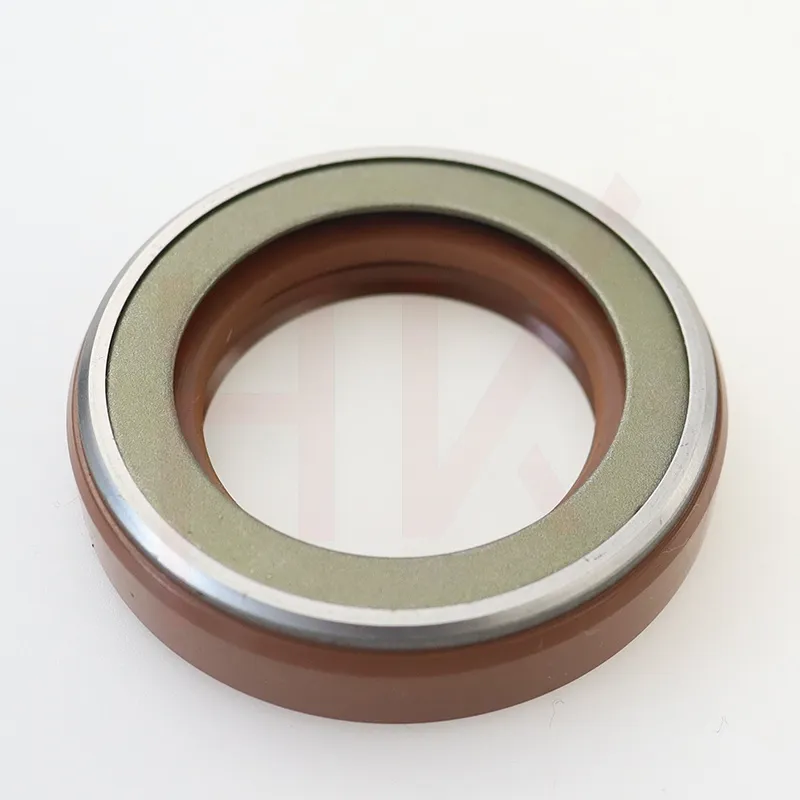Tach . 25, 2024 14:20 Back to list
high pressure rotary shaft seal
High Pressure Rotary Shaft Seals An Overview
High pressure rotary shaft seals are critical components in a vast range of mechanical systems, ensuring efficient operation and longevity of equipment. These seals are designed to prevent fluid leakage, maintain pressure, and protect against contamination in rotating machinery. With their unique properties and applications, they play a vital role in various industries including automotive, aerospace, manufacturing, and oil and gas.
Understanding Rotary Shaft Seals
A rotary shaft seal typically consists of a seal lip, a housing, and a spring. The seal lip is the part that makes contact with the rotating shaft, effectively creating a barrier to prevent the escape of fluids. The spring applies constant pressure on the seal lip, ensuring it maintains contact with the shaft, even under varying operational conditions such as temperature fluctuations and wear.
The primary function of a high pressure rotary shaft seal is to contain fluids or gases within a system while preventing leakage. In high-pressure environments, these seals need to withstand significant forces, making their design and material selection critical. Common materials used in the construction of these seals include elastomers like nitrile, fluorocarbon, or polyurethane, each chosen for their chemical resistance and durability.
Applications in Various Industries
High pressure rotary shaft seals are indispensable in many industrial applications. In the automotive industry, these seals ensure that engines, gearboxes, and hydraulic systems operate efficiently by preventing oil and coolant leaks. In gearboxes, for example, a well-performing seal decreases the risk of cross-contamination and prolongs oil life.
In the aerospace sector, rotary shaft seals play a crucial role in the operation of engines and landing gear systems. The seals must endure extreme temperatures and pressures, often leading to the utilization of specialized high-performance materials to withstand such conditions. Additionally, these seals help protect critical components from dust and debris, ensuring smooth operation and safety.
The oil and gas industry also heavily relies on high pressure rotary shaft seals due to the harsh operating environments and the necessity to prevent leaks that could lead to costly downtime or environmental hazards. In drilling and production equipment, these seals ensure the safe and efficient transport of crude oil and natural gas.
high pressure rotary shaft seal

Key Performance Factors
When selecting high pressure rotary shaft seals, several performance factors must be considered. The seal's ability to operate effectively under pressure, temperature resistance, chemical compatibility, and wear resistance are all critical. The design of the seal lip, including its geometry and the material hardness, influences its sealing capability and longevity.
Furthermore, the choice of lubrication is essential, as it reduces friction and wear on the seal, enhancing its lifespan. Understanding the operational parameters and the specific requirements for each application can significantly influence the selection process for the right seal.
Future Trends and Innovations
As industries continue to evolve, the demand for more efficient, reliable, and high-performance rotary shaft seals is increasing. Innovations in materials science, such as the development of advanced polymers, are paving the way for seals that can withstand even more extreme conditions. Researchers are also exploring self-lubricating materials and smart seals that can provide real-time monitoring of their condition.
Moreover, as sustainability becomes a priority, manufacturers are focusing on producing seals that are not only efficient but also environmentally friendly. This includes the development of seals that reduce fluid leakage and minimize the risk of contamination.
Conclusion
High pressure rotary shaft seals are essential components that ensure the reliability and efficiency of various mechanical systems across multiple industries. Their ability to prevent leaks under demanding conditions makes them indispensable to modern engineering. As technology advances, so too will the capabilities of these seals, leading to enhanced performance and sustainability in their applications. Understanding their design, function, and potential for innovation is crucial for ensuring the optimal performance of machinery in an ever-evolving industrial landscape.
-
TCN Oil Seal Metal Ring Reinforcement for Heavy Machinery
NewsJul.25,2025
-
Rotary Lip Seal Spring-Loaded Design for High-Speed Applications
NewsJul.25,2025
-
Hydraulic Cylinder Seals Polyurethane Material for High-Impact Jobs
NewsJul.25,2025
-
High Pressure Oil Seal Polyurethane Coating Wear Resistance
NewsJul.25,2025
-
Dust Proof Seal Double Lip Design for Construction Equipment
NewsJul.25,2025
-
Hub Seal Polyurethane Wear Resistance in Agricultural Vehicles
NewsJul.25,2025
-
The Trans-formative Journey of Wheel Hub Oil Seals
NewsJun.06,2025
Products categories
















